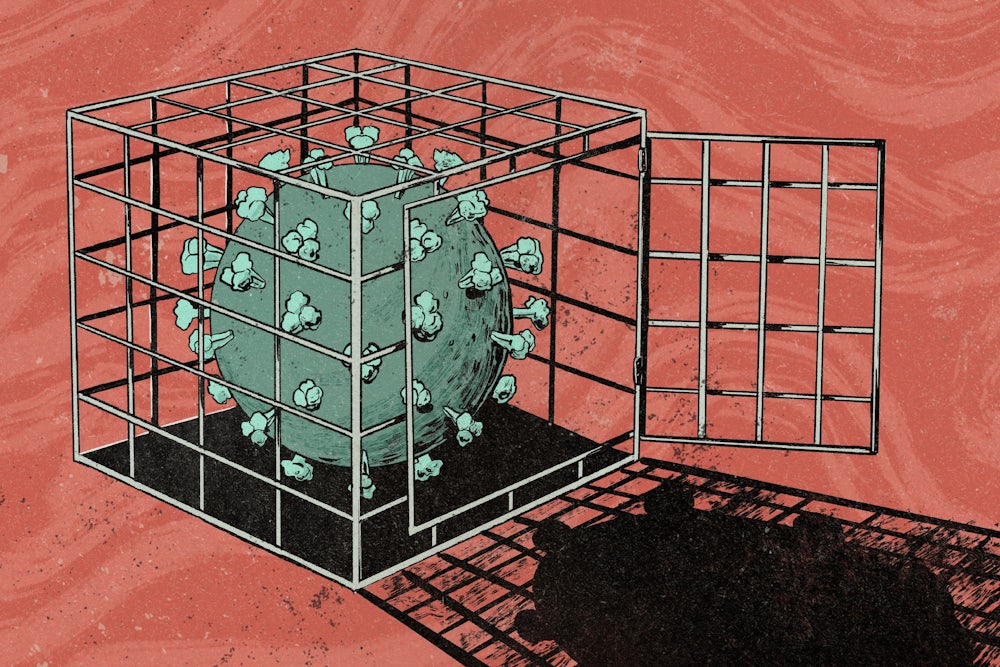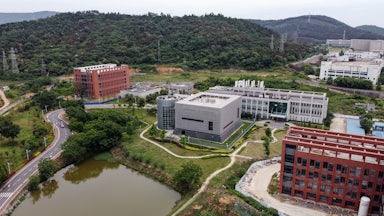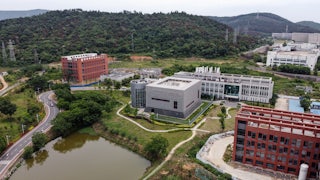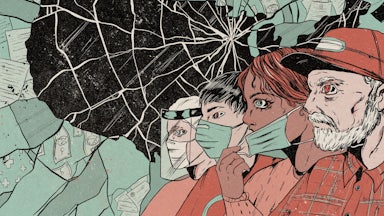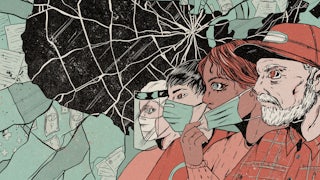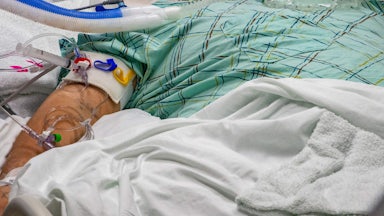It has been two years since the World Health Organization declared Covid-19 a global pandemic, stamping an official label on the horror and uncertainty engulfing the globe. Amid the pain and heartbreak of rampant disease, disability, and death in the past two years, we’ve learned a lot: The coronavirus is airborne; it can spread even if you don’t have symptoms; it can mutate to become more contagious and virulent; we could prevent a great deal of grief with vaccines and treatments. And as we begin the third year of this global pandemic, we’re slowly circling back to where this all started: with animals.
This past Monday, the WHO highlighted the importance of monitoring SARS-CoV-2 in wildlife. The virus is circulating in an unknown number of other species, the WHO pointed out, and new variants seem to be emerging and spilling back—most recently, from hamsters and deer—into people.
In January 2020, the first article I ever wrote about a then-novel coronavirus focused on preventing these kinds of spillover events. Epidemiologists had already identified the Huanan Seafood Market—a sprawling 12-acre marketplace, similar to a farmer’s market, offering fresh produce, seafood, and meat—as a likely epicenter of the growing pandemic. The evidence for this origin story has grown over the past two years as new research has emerged. One study showed dozens of animals potentially susceptible to the coronavirus were regularly sold at the Huanan market, right up until November 2019, when the virus likely emerged. Another study linked the first known case of Covid-19 to the Huanan market; before that, an early case was thought to have no link to the market, seemingly pointing to a different source of infection.
Just a few weeks ago, new research homed in on the market as the most likely place where the virus emerged and began spreading in people. The spillover happened not once but twice, according to a set of preprint studies that have not yet been peer-reviewed or published officially. The researchers examined a wide range of disparate data, including genetic information about two early variants, the layout of the market, and photos on social media, to conclude that both lineages of the virus likely evolved for a few weeks among animals before spreading to humans at the market. These findings overlapped with a separate preprint study from the Chinese Center for Disease Control and Prevention showing that these earliest known versions of SARS-CoV-2 were present in and around the market before it was shut down in early January 2020.
“This is probably the big turning point,” Dr. Michael Worobey, one of the leading researchers involved with both studies and head of the Ecology and Evolutionary Biology Department at the University of Arizona, told me. “For me, it’s quite definitive.” Mapping the early cases in Wuhan formed a “very striking pattern,” creating “basically a bull’s-eye right on Huanan market,” he said. More data on the sequences collected around the market would help pinpoint which animal or animals (or humans, for that matter) sparked the outbreak; for now, raccoon dogs, red foxes, badgers, porcupines, muntjac deer, and marmots seem the most likely mammals. But “we’re at a point where we know, big picture, that it started at the market,” Worobey said.
These studies don’t just further undermine the likelihood of one theory for how Covid-19 started: the “lab leak” hypothesis, which holds that SARS-CoV-2 was developed at least in part by scientists at the Wuhan Institute of Virology and then somehow escaped from the lab. They also show where we should be focusing our attention to prevent the next zoonotic crisis. “You really do want to know which scenario it was to focus your efforts on preventing the next one,” Worobey said.
“It’s really an exercise in preparedness—trying to understand, how did this emerge? How can we prevent this from happening again?” Dr. Angela Rasmussen, an author of one of the studies and a virologist at the Vaccine and Infectious Disease Organization at the University of Saskatchewan, told me. Finding the origins of SARS-CoV-2—and other viruses, like influenza, that spill over from animals—is “critical for trying to mitigate those risks and make those interactions with animals safer, and ideally you want to do that without having a significant economic impact or a significant impact on food security.”
When international outlets began reporting on Covid-19 and the Huanan Seafood Market in earnest in early 2020, the racism and exoticism around China’s animal trade obscured a central fact: There are live animal markets all over the world, and people interact with domesticated and wild animals in many different ways.
Believing this is a risk specific to China overlooks the potential for pandemics to start in agricultural operations in the United States, Rasmussen said. Influenza, she noted, can be “amplified” in poultry and pig farms and then spread to humans. Several poultry farms in the U.S. are currently battling bird flu outbreaks. “Whether you’re talking about a raccoon dog farm in China or you’re talking about a massive hog farm in the United States, we need to understand that this is a known risk—and then this should be a no-brainer that we’re trying to mitigate,” she said.
Focusing only on the wildlife trade, farms, and large markets where animals are brought together to be bought or sold isn’t enough, either, experts say; instead, we should train our attention on anywhere people and animals are coming in closer contact, particularly as the climate changes and land use is transformed around the globe. As humans continue reshaping the planet with our actions, forcing animals to flee habitats and encroaching on their homes, we are creating more opportunities for previously unknown viruses to spread to people.
“Most of these emerging viruses are zoonotic viruses—they’re coming out of other animals,” Rasmussen said. “Animals in general and our interactions with them are a potential source for spillover of novel or emerging or reemerging viruses.… If the animals’ ecosystems are disrupted, they’re going to start moving around and potentially behaving in different ways because they need to find new food sources or water sources.”
Carefully watching for the emergence of new diseases in animals and people is a critical pillar for stopping outbreaks at their source. That means that national governments need to invest in genomic sequencing and surveillance programs, and they need to share data from these programs with other nations. SARS-CoV-2 was identified relatively quickly in China because of concerns after the original SARS outbreak, which led to increased disease surveillance and viral discovery. Yet in many places, these surveillance efforts—both for new illnesses and existing diseases like Covid-19—are “clearly insufficient,” Rasmussen said. “I don’t think we have a good understanding of which animals this virus is circulating in, and we certainly don’t have a good global understanding of which species present the highest risk, really, for any virus.”
Improving human health is another key component in preventing the next big zoonotic crisis. Offering better health care for those most at risk of coming into contact with pathogens—think poultry farm workers, wildlife hunters, farmers, and loggers clearing forests—can improve early warning signals about crossover viruses. “You really do need to have more comprehensive wildlife surveillance efforts, but you also need to try to tie those into observations and unexplained human disease that are going to be popping up,” Rasmussen said. “Human and animal health is inextricably linked.”
Making sure that people have enough safe food is also important part of the discussion. When international outlets first started covering Covid-19, many pointed fingers (inaccurately) at Chinese culinary habits and called for wildlife bans, even though it’s still unclear whether the virus emerged from wild or domesticated animals. “The last thing I want to see is a focus on the people at the bottom of the ladder here who are trying to make a living for their families,” Worobey said. Instead, we should focus on “the systems that can lead to this”—poverty, hunger, resource extraction.
Covid-19 has also illuminated the pressing issue of “spillback,” a phenomenon that is less understood. Spillover occurs when a virus moves from animals to humans, but spillback is when viruses move from people to animals and back to people, evolving along the way. New research in Canada indicates a highly mutated version of SARS-CoV-2 in white-tailed deer may have now passed into people. “New variants can emerge from circulation in populations of wild animals—and it was striking to me how much that [deer variant] actually looked, in some ways, similar to omicron, where it was this completely different evolutionary branch that this variant was a part of,” Rasmussen said. “What if the next omicron comes out of an animal population and is actually more pathogenic or potentially even more transmissible? What if it’s distinct enough, from an immunological perspective, that it is not only capable of evading the protection that vaccines provide against infection but also the protection that they provide against severe disease? That is the kind of thing that keeps me up at night.”
Above all, we need to understand that viruses can and will surprise us—but being prepared for as many potential scenarios as possible can lessen many of those surprises. “If there’s anything that this pandemic has taught me, it’s to have some humility about what can and cannot happen,” Rasmussen said. Two years into this devastating outbreak, research and monitoring of zoonotic spillover and viral emergence has “only just scratched the surface. What else are we going to find if we start looking harder? And I think we absolutely need to start looking harder.”
